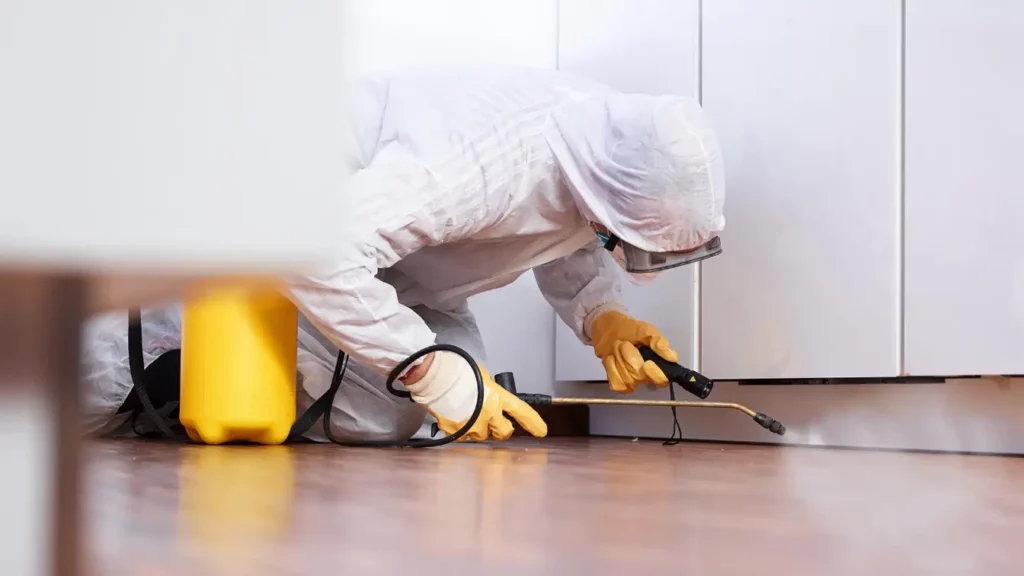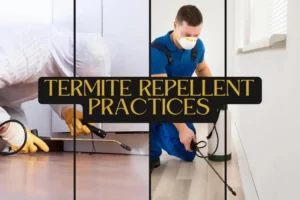Termites, often called “silent destroyers,” can wreak havoc on homes and structures if left unchecked. These wood-eating pests can cause extensive damage, leading to costly repairs.
As a responsible homeowner, being proactive in preventing and dealing with termite infestations is crucial. This article explores termite-repellent practices and safe extermination measures that every homeowner should know to protect their homes.
Understanding the Threat

Termites are social insects that thrive on cellulose-based materials, such as wood. There are different types of termites, with subterranean termites being the most common and destructive.
Learn affordable pest control solutions from this website and how to identify signs of a termite infestation.
These pests work silently, often causing significant damage before their presence becomes evident. Homeowners should know the signs of a termite infestation, including mud tubes on walls, damaged or hollow-sounding wood, discarded termite wings, and visible termite tunnels.
Preventive Measures
Regular Inspections
Conduct routine home inspections, especially in areas susceptible to termite infestation, such as basements, crawl spaces, and attics. Look for signs of termite activity, including mud tubes, droppings, and damaged wood.
Moisture Control
Termites are attracted to moisture, so keeping your home dry is essential. Fix leaks promptly, ensure proper ventilation, and consider using dehumidifiers in damp areas.
Wood Treatment
Treat wooden structures and furniture with termite-resistant products. Pressure-treated wood and naturally resistant woods like cedar and redwood can deter termite infestations.
Safe Extermination Measures
Natural Repellents
Some natural substances can act as termite repellents. Neem oil, derived from the neem tree, stands out as a potent plant-based solution.
Not only does neem oil disrupt the termite’s growth cycle, but it also acts as a powerful deterrent, discouraging them from infesting wooden structures.
To shield your home, apply neem oil directly onto wooden surfaces or concoct a neem oil spray for optimal and lasting results in the ongoing battle against termite intrusions.
Boric Acid
Boric acid is a low-toxicity substance that is lethal to termites. You can apply it directly to infested areas or use it as a preventive treatment. Boric acid disrupts the termite’s digestive system, and you can incorporate it into bait systems to eliminate entire colonies.
Beneficial Nematodes
Beneficial nematodes are microscopic worms that feed on termites and other harmful insects. When strategically introduced into the soil surrounding your home, these tiny worms embark on a mission to feed on termites, establishing a natural and safe barrier against infestations.
Embracing the ecological balance and integrating beneficial nematodes into your soil not only guards against termite threats but also contributes to a sustainable and environmentally friendly approach to pest management.
Cardboard Traps
Create DIY cardboard traps by wetting pieces of cardboard and placing them in areas where you suspect termite activity. Termites are attracted to the cellulose in the cardboard, making it an effective trap. Once the cardboard is infested, dispose of it safely to eliminate the termites.
Orange Oil
Orange oil, derived from orange peels, contains toxic compounds to termites. It can be applied directly to infested areas or as a preventive measure. Orange oil is an eco-friendly alternative to chemical pesticides and is known for its effectiveness in eliminating termites on contact.
Professional Extermination

While the above methods can be adequate for small infestations, severe termite problems may require professional intervention. Pest control experts use advanced techniques and products to eradicate termites safely and efficiently. Here are some professional extermination measures:
Insect Growth Regulators (IGRs)
Insect growth regulators disrupt the normal development of termites, inhibiting their ability to molt and grow. Pest control experts may use IGRs as part of a comprehensive treatment plan to control and eventually eliminate termite populations.
Biological Control Agents
Introducing natural predators or parasites that feed on termites is a biological control approach. Certain nematodes, fungi, and predators like ants can be used strategically to manage termite populations, providing an environmentally friendly solution.
Fumigation
In extreme cases, fumigation may be necessary to eliminate termites throughout the structure. This process involves sealing the building and introducing a fumigant gas that penetrates all areas, eradicating termites at every stage of development.
Localized Treatments
For specific infestations in confined areas, professionals may opt for localized treatments. This involves treating only the affected areas rather than the entire structure, minimizing the use of chemicals, and reducing the environmental impact.
Post-Treatment Monitoring and Maintenance
Following the application of extermination measures, pest control experts emphasize the importance of ongoing monitoring and maintenance. Regular inspections ensure the termite population is under control and that you address any signs of resurgence promptly.
Conclusion
Termites pose a significant threat to homeowners, and early detection and preventive measures are crucial to protecting your investment.
Homeowners can safeguard their homes from these destructive pests by incorporating natural repellents, DIY solutions, and professional extermination when necessary.
Regular inspections, moisture control, and termite-resistant materials are crucial components of a comprehensive termite management plan.
By staying informed and taking proactive steps, homeowners can enjoy peace of mind knowing that their homes are resilient against the silent threat of termites.
